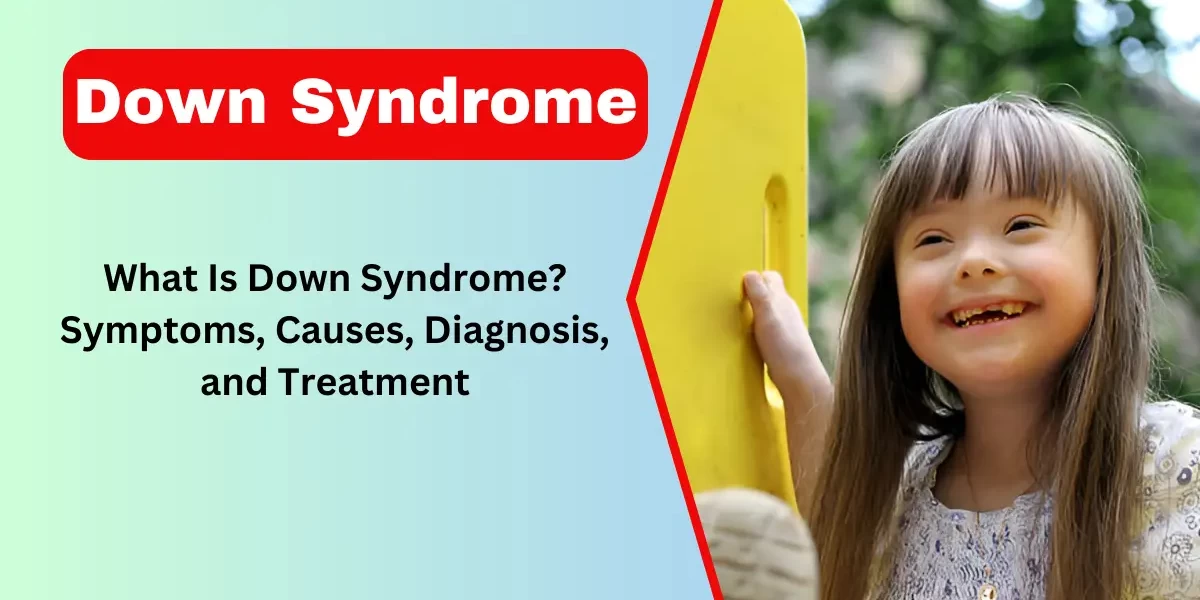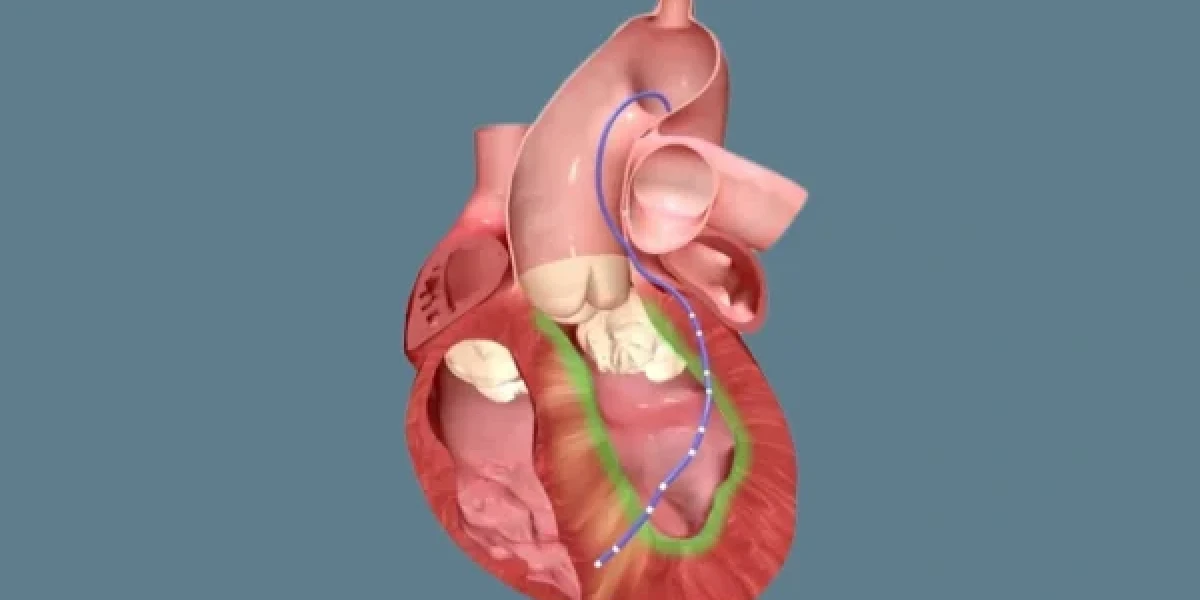Down syndrome is one of the most well-known genetic conditions, yet it remains widely misunderstood. It affects millions of people worldwide, and while it presents challenges, it also brings unique strengths and perspectives to those who live with it. This article delves into every aspect of Down syndrome, from its genetic origins to the latest advancements in research and treatment. By the end, you’ll have a thorough understanding of what Down syndrome is, how it impacts individuals, and how society can better support those affected.
What Is Down Syndrome?
Down syndrome, also known as Trisomy 21, is a genetic disorder caused by the presence of an extra copy of chromosome 21. To understand this condition, it’s essential to first grasp the basics of human genetics.
The Role of Chromosomes
Humans typically have 23 pairs of chromosomes, which carry genetic information in the form of DNA. These chromosomes determine everything from eye color to susceptibility to certain diseases. During conception, a baby inherits one set of 23 chromosomes from each parent, totaling 46 chromosomes.
In Down syndrome, an error occurs during cell division, resulting in an extra copy of chromosome 21. This additional genetic material disrupts normal development, leading to the physical and cognitive characteristics associated with the condition.
Types of Down Syndrome
There are three primary types of Down syndrome, each with distinct genetic causes:
-
Trisomy 21: This is the most common form, accounting for about 95% of cases. In Trisomy 21, every cell in the body has three copies of chromosome 21 instead of two.
-
Mosaic Down Syndrome: This rare form occurs in about 1-2% of cases. In mosaic Down syndrome, only some cells have the extra chromosome, while others have the typical two copies. This can result in milder symptoms, depending on the proportion of affected cells.
-
Translocation Down Syndrome: This type accounts for about 3-4% of cases. In translocation Down syndrome, part of chromosome 21 attaches to another chromosome, often chromosome 14. Unlike Trisomy 21, this form can be inherited from a parent who carries a rearranged chromosome.
Prevalence and Demographics
Down syndrome occurs in approximately 1 in every 700 births in the United States, according to the Centers for Disease Control and Prevention (CDC). The condition affects people of all races and economic backgrounds. However, the likelihood of having a child with Down syndrome increases with maternal age. For example, a 25-year-old woman has a 1 in 1,200 chance of having a baby with Down syndrome, while a 40-year-old woman has a 1 in 100 chance.
Signs and Symptoms of Down Syndrome
The signs and symptoms of Down syndrome can vary widely from person to person. While some individuals may have mild symptoms, others may experience more significant challenges. These characteristics can be broadly categorized into physical, cognitive, and developmental traits.
Physical Features
Individuals with Down syndrome often share certain physical characteristics, though these can vary in severity. Some of the most common features include:
-
Facial Characteristics: A flattened facial profile, upward-slanting eyes, and a small nose are hallmark features.
-
Low Muscle Tone (Hypotonia): Infants with Down syndrome may appear "floppy" due to reduced muscle strength. This can affect motor skills and development.
-
Short Stature: Children and adults with Down syndrome are often shorter than their peers.
-
Single Palmar Crease: A single line across the palm of the hand, rather than the typical two or three lines.
-
Small Ears and Mouth: These features are often noticeable at birth.
-
Protruding Tongue: Due to a smaller oral cavity, the tongue may appear larger and protrude slightly.
Cognitive and Developmental Traits
The intellectual capabilities of people with Down syndrome can vary, encompassing levels from slight to moderate cognitive impairment. Common traits include:
-
Delayed Speech and Language Development: Many children with Down syndrome take longer to speak and may benefit from speech therapy.
-
Learning Difficulties: Individuals may require additional support in academic settings, though many can achieve significant milestones with the right resources.
-
Social Skills: Despite cognitive challenges, many individuals with Down syndrome are highly social, empathetic, and enjoy interacting with others.
Associated Health Conditions
In addition to physical and cognitive traits, individuals with Down syndrome are at a higher risk for certain health conditions, including:
-
Congenital Heart Defects: Nearly half of babies with Down syndrome are born with heart defects, such as atrial septal defect (ASD) or ventricular septal defect (VSD).
-
Hearing and Vision Problems: Ear infections and hearing loss are common, as are vision issues like cataracts and refractive errors.
-
Sleep Apnea: Due to anatomical differences, sleep disorders are prevalent.
-
Gastrointestinal Issues: Conditions like celiac disease and constipation are more common.
-
Increased Risk of Infections: Immune system differences can make individuals more susceptible to infections.
Causes and Risk Factors of Down Syndrome
The primary cause of Down syndrome is the presence of an extra chromosome 21. However, the exact reason for this chromosomal abnormality is not fully understood. Let’s explore the causes and risk factors in detail.
Genetic Causes
As mentioned earlier, Down syndrome occurs due to an error in cell division. This error can happen in one of three ways:
-
Nondisjunction: This is the most common cause, occurring during the formation of reproductive cells (eggs or sperm). Instead of separating properly, chromosome 21 fails to divide, resulting in an egg or sperm with an extra copy. When fertilization occurs, the resulting embryo has three copies of chromosome 21.
-
Mosaicism: In this rare form, the error occurs after fertilization, during the early stages of cell division. As a result, only some cells have the extra chromosome, while others are normal.
-
Translocation: In this form, part of chromosome 21 breaks off and attaches to another chromosome, often chromosome 14. Unlike Trisomy 21, translocation Down syndrome can be inherited from a parent who carries the rearranged chromosome.
Risk Factors
While the exact cause of the chromosomal error is unknown, certain factors increase the likelihood of having a child with Down syndrome:
-
Advanced Maternal Age: The risk increases significantly after age 35. For example, a 25-year-old woman has a 1 in 1,200 chance, while a 40-year-old woman has a 1 in 100 chance.
-
Family History: Parents who have had one child with Down syndrome are at a slightly higher risk of having another.
-
Carrier Status: In cases of translocation Down syndrome, a parent may carry the rearranged chromosome without showing symptoms.
How Is Down Syndrome Diagnosed?
Diagnosis of Down syndrome can occur before or after birth, depending on the circumstances. Early diagnosis allows families to access resources and plan for the future.
Prenatal Testing
Prenatal testing includes screening and diagnostic tests:
-
Screening Tests: These assess the likelihood of Down syndrome but do not provide a definitive diagnosis. Examples include:
-
First-Trimester Screening: Combines a blood test and an ultrasound to measure nuchal translucency (fluid at the back of the baby’s neck).
-
Second-Trimester Screening: Includes a blood test known as the quad screen.
-
Non-Invasive Prenatal Testing (NIPT): A blood test that analyzes fetal DNA in the mother’s blood.
-
Diagnostic Tests: If screening tests indicate a higher risk, diagnostic tests can confirm the diagnosis. These include:
Postnatal Diagnosis
After birth, a physical examination and genetic testing (karyotype analysis) can confirm the presence of Down syndrome. Early diagnosis allows for prompt intervention and support.
Treatment and Medication
While there is no cure for Down syndrome, a combination of therapies and interventions can help individuals lead fulfilling lives.
Therapies
-
Speech Therapy: Improves communication skills and helps with language development.
-
Physical Therapy: Enhances motor skills, muscle strength, and coordination.
-
Occupational Therapy: Focuses on daily living activities, such as dressing, eating, and writing.
-
Educational Support: Tailored learning plans can address individual needs and promote academic success.
Medications
Medications may be prescribed to manage associated health conditions, such as thyroid disorders, heart defects, or infections. Regular health check-ups are essential to monitor and address any complications.
Complications of Down Syndrome
Individuals with Down syndrome are at a higher risk for certain health conditions, including:
-
Congenital Heart Defects: Nearly half of babies with Down syndrome are born with heart issues, which may require surgery.
-
Hearing and Vision Problems: Regular screenings are crucial to detect and address these issues early.
-
Sleep Apnea: Due to anatomical differences, sleep disorders are common and may require treatment.
-
Alzheimer’s Disease: The risk increases with age, often appearing earlier than in the general population.
Proactive healthcare and early intervention can mitigate many of these complications.
Research and Statistics
Ongoing research continues to shed light on Down syndrome, improving diagnosis, treatment, and quality of life. Here are some key findings:
-
Life Expectancy: Thanks to medical advancements, the average life expectancy for individuals with Down syndrome has increased to about 60 years.
-
Inclusive Education: Studies show that inclusive classrooms benefit both children with Down syndrome and their peers.
-
Genetic Research: Scientists are exploring ways to target the extra chromosome 21, potentially reducing its impact.
Organizations like the National Down Syndrome Society (NDSS) and Global Down Syndrome Foundation are at the forefront of advocacy and research, driving progress and raising awareness.
Conclusion
Down syndrome is a complex condition that affects individuals in unique ways. By understanding the signs and symptoms of Down syndrome, its causes and risk factors, and the available treatments, we can better support those living with the condition. Advances in research and a growing emphasis on inclusivity are paving the way for a brighter future. Whether you’re a parent, educator, or simply someone seeking to learn more, knowledge is the key to fostering empathy and creating a more inclusive world.
If you or someone you know is affected by Down syndrome, remember that support is available. From early intervention programs to community resources, there are countless ways to help individuals with Down syndrome thrive. Together, we can celebrate their strengths and ensure they have every opportunity to succeed.
FAQ's
1. What is Down syndrome meaning?
Down syndrome is a chromosomal disorder resulting from an additional copy of chromosome 21, known as trisomy 21. It leads to developmental delays, intellectual disabilities, and certain physical characteristics such as a flat facial profile, upward-slanting eyes, and low muscle tone. It is a lifelong condition that varies in severity among individuals.
2. How to prevent Down syndrome in a baby?
Down syndrome is a genetic condition and cannot be entirely prevented, as it is caused by a random error in cell division during the formation of reproductive cells or early fetal development. However, some steps may help reduce the risk:
-
Genetic counseling: For families with a history of genetic disorders.
-
Healthy lifestyle: Maintaining good health before and during pregnancy.
-
Prenatal screening: To assess the risk of chromosomal abnormalities.
-
Avoiding advanced maternal age: The risk of Down syndrome increases with the mother's age, particularly after 35.
3. What are the effects of Down syndrome?
The effects of Down syndrome vary but may include:
-
Intellectual disabilities: Mild to moderate cognitive delays.
-
Physical characteristics: Flat facial features, small head, short neck, and protruding tongue.
-
Health issues: Heart defects, hearing loss, vision problems, thyroid disorders, and a higher risk of infections.
-
Developmental delays: Slower speech, motor skills, and social development.
-
Behavioral challenges: Attention deficits, stubbornness, or impulsivity.
4. What is the risk of Down syndrome?
The risk of Down syndrome increases with maternal age:
-
At age 25: 1 in 1,250 chance.
-
At age 35: 1 in 350 chance.
-
At age 40: 1 in 100 chance.
-
At age 45: 1 in 30 chance.
Other risk factors include a family history of Down syndrome or having a previous child with the condition.
5. Is Down syndrome curable?
Down syndrome is not curable, as it is a genetic condition. However, early intervention programs, therapies (speech, physical, and occupational), and educational support can significantly improve the quality of life for individuals with Down syndrome. Medical care can also address associated health issues.
6. Can a Down syndrome child look normal?
Children with Down syndrome often have distinct physical features, such as a flat facial profile, almond-shaped eyes, and a small nose. However, the degree of these features varies, and some children may have milder characteristics. With proper care and support, they can lead fulfilling lives and achieve milestones, though at a different pace.
7. Who is a famous person with Down syndrome?
One famous person with Down syndrome is Chris Nikic, the first person with Down syndrome to complete an Ironman triathlon. Another notable individual is Madeline Stuart, a model with Down syndrome who has gained international recognition in the fashion industry.
8. Can Down syndrome talk normally?
Speech development in individuals with Down syndrome is often delayed, and they may face challenges with articulation and language comprehension. However, with early speech therapy and consistent support, many can develop effective communication skills. Some may use alternative communication methods, such as sign language or assistive devices, to enhance their ability to express themselves.
9. Can folic acid prevent Down syndrome?
Folic acid is essential for preventing neural tube defects (e.g., spina bifida) during pregnancy, but it does not prevent Down syndrome. Since Down syndrome is caused by a chromosomal abnormality, folic acid cannot influence its occurrence. However, taking folic acid is still recommended for overall fetal health and development.












